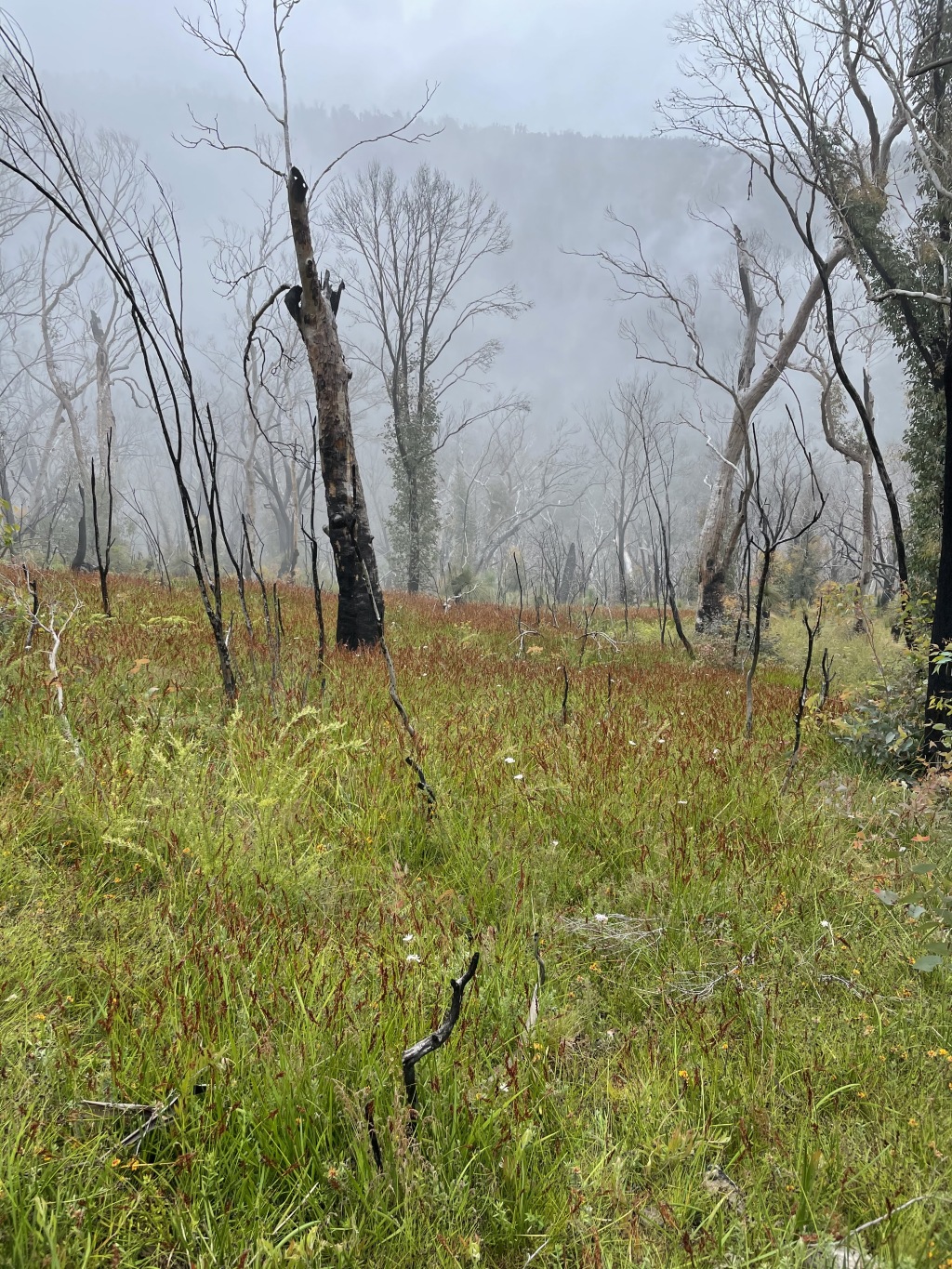Machaerina planifolia
(Benth.) K.L.WilsonPerennial with long rhizome. Culms rigid, oval to nearly flat, nodeless or rarely 1-noded, striate, glabrous, scabrous to smooth, mostly 15–80 (rarely to c. 150) cm high, 1.2–4.0 mm diam. Leaves basal; blade flat or narrow-rhomboid in cross-section, strongly scabrous, broader and shorter than culms, to 6.5 mm wide; sheath pale brown, dull. Inflorescence ovate to oblong in outline, erect, 4–14 cm long, 1–3.5 cm diam.; lowest involucral bract much shorter than inflorescence. Spikelets numerous, 1-flowered, 3.5–4.5 mm long; glumes 3 or 4, long-acute with apex often excurved, unevenly coloured pale to mid-red-brown (rarely darker), margins glabrous or sparsely ciliate; fertile glumes 3.0–3.8 mm long. Nut ovoid to ellipsoid, with irregular coarse reticulations or ridges, ± minutely white-papillose between ridges, minutely hispid or papillose at apex, pale to dark brown, 1.7–2.0 mm long, 0.8–1.1 mm diam. Flowers spring–summer.
VRiv, CVU, GGr, NIS, HNF, MonT, VAlp. Also Qld, NSW, Tas. Near swamps and mountain streams in cool, elevated areas (e.g. Strathbogie Ranges, Whitfield, Shelley, Burrowa, Benambra, Grampians, Wulgulmerang districts).
Wilson, K.L. (1994). Cyperaceae. In: Walsh, N.G.; Entwisle, T.J., Flora of Victoria Vol. 2, Ferns and Allied Plants, Conifers and Monocotyledons, pp. 238–356. Inkata Press, Melbourne.
 Spinning
Spinning
